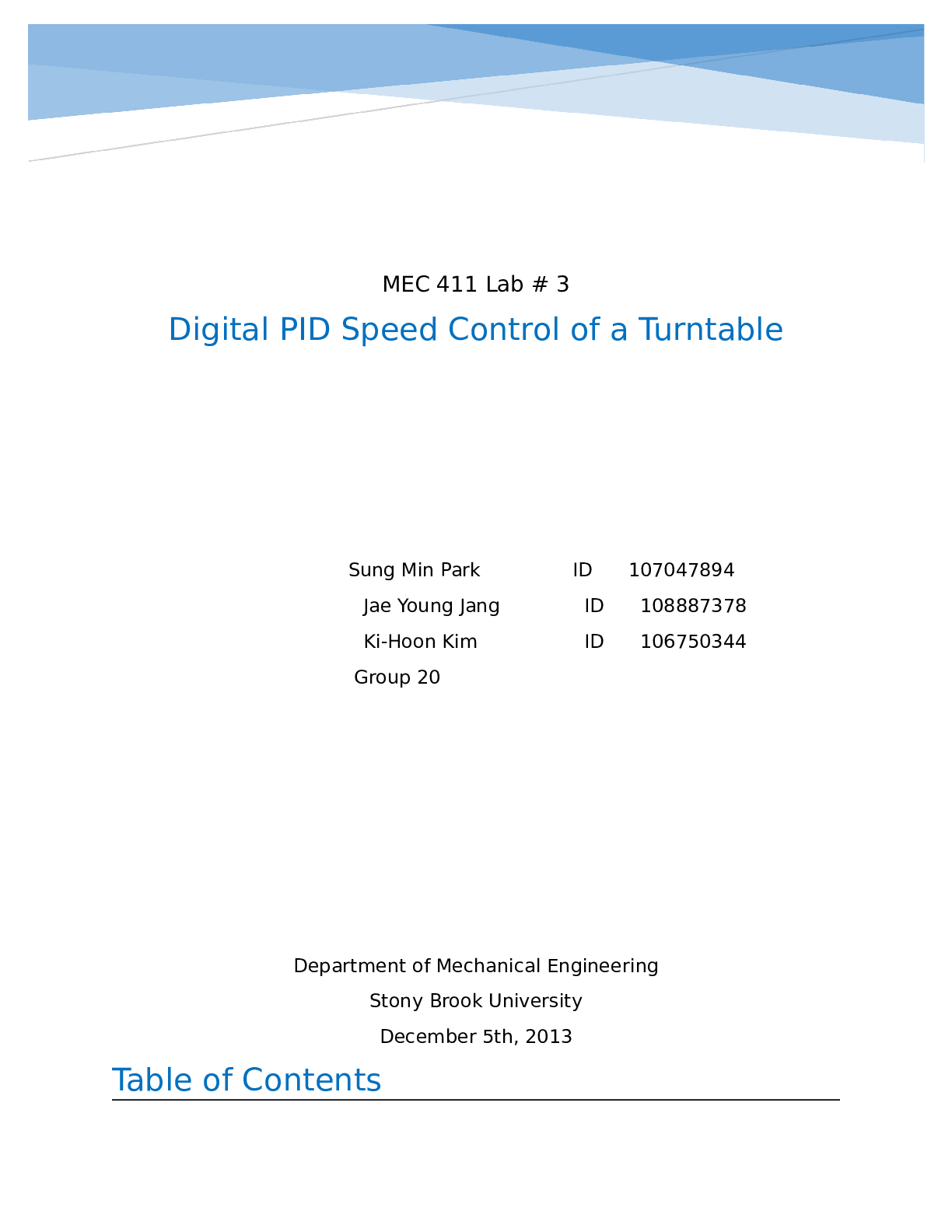Mechanical Engineering > Experiment > Stony Brook University MEC 411 fnukarmanorbu (All)
Stony Brook University MEC 411 fnukarmanorbu
Document Content and Description Below
MEC 411 Lab # 3 Digital PID Speed Control of a Turntable Sung Min Park ID 107047894 Jae Young Jang ID 108887378 Ki-Hoon Kim ID 106750344 Group 20 Department of Mechanical Engineering Stony B... rook University December 5th, 2013 Table of Contents 1 | P a g e Abstract 2 | P a g e Introduction 3 | P a g e Origin of PID Controller Closed Loop Feedback Transfer Function PID Turntable Speed Control system and the PID Transfer Functions Derivations of the transfer functions for each component of PID analog circuit Data Acquisition System (DAQ) and LABVIEW programming Experimental Procedure 20 | P a g e Results 22 | P a g e Discussion 30 | P a g e Conclusions 35 | P a g e Reference 36 | P a g e Appendix 37 | P a g e Abstract MEC411 Laboratory Experiment 2 PID Speed control of a Turntable Fall 2013, Stony Brook University 2 | P a g e In this design experiment, an implementation of PID turntable speed control system that satisfies certain performance specifications has been thoroughly studied and approached. Our final design will then be submitted for a new contract for a turntable speed control system that satisfies given performance and feature specifications. The targeted objective specifications in the design are: Percentage overshoot is to be less than 10%, settling time to within 2% of the final value is to be less than 500ms, the Rise time is to be less than 200ms, and a combination of self-authored software with a Data Acquisition (DAQ) interface. This system implementation required a building of an analog circuit of the PID controller connected to a waveform generator and the DC motor with tachometer. Then, the actual speed of the turntable was measured by the tachometer, which then its data was collected via oscilloscope and to the computer. In the experiment, Rp2, Ri, and Rd1 (of PID controller) were tuned to 6.826 K Ω , 337 Ω , and 2.433 K Ω respectively, and obtained 0.0325 seconds (Rise Time), 0.048 seconds (Settling Time), 7.8% (Overshoot), and 1.078 volt (Peak Voltage). Finally, the results obtained experimentally was compared to theoretical results obtained using MATLAB (Appendix B.1), and to experimental results from the previous investigations so as to demonstrate the efficiency of our design. [Show More]
Last updated: 2 years ago
Preview 1 out of 52 pages

Buy this document to get the full access instantly
Instant Download Access after purchase
Buy NowInstant download
We Accept:

Reviews( 0 )
$6.50
Can't find what you want? Try our AI powered Search
Document information
Connected school, study & course
About the document
Uploaded On
Nov 07, 2022
Number of pages
52
Written in
Additional information
This document has been written for:
Uploaded
Nov 07, 2022
Downloads
0
Views
87



